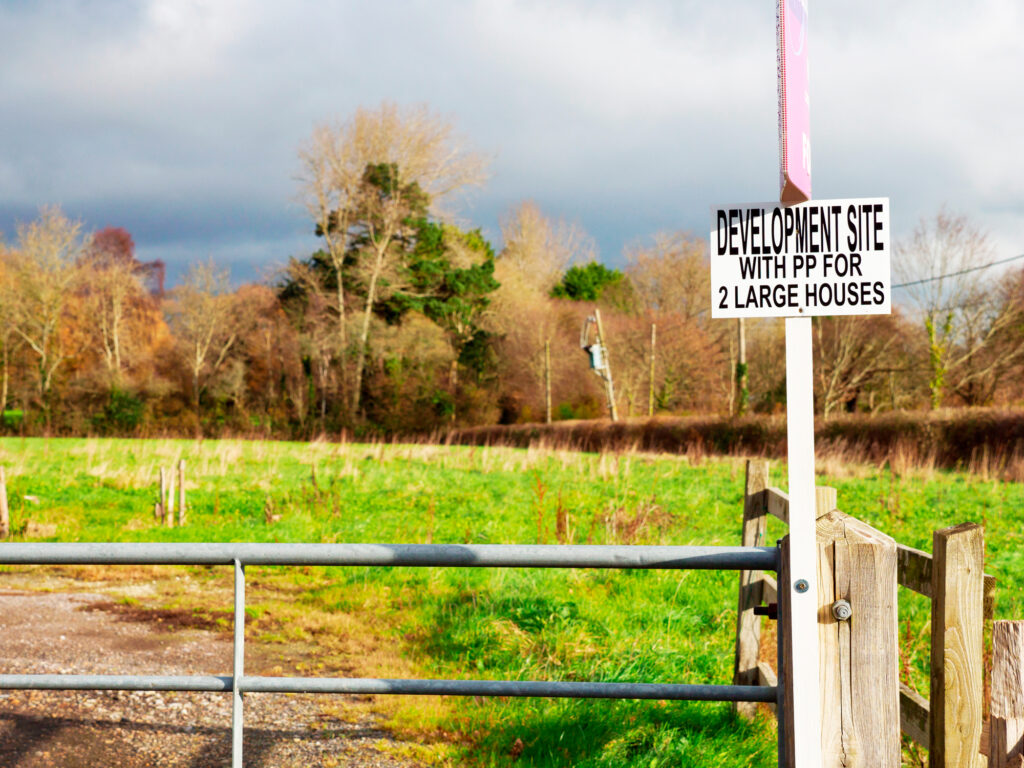
Use code BUILD for 20% off
Book here!
Use code BUILD for 20% off
Book here!Towns and cities have something of a reputation for being difficult to self-build in – but in fact they can offer a diverse range of opportunities for creating tailor-made homes. In addition to a wealth of properties ripe for renovation and extension, there’s often a steady supply of brownfield sites and infill plots in urban areas.
What’s more, PD (permitted development) rights for conversions and changes of use have expanded in recent years – meaning many projects can progress without the need to go through the full rigours of the planning application regime. Add to that the fact that the government is exerting pressure on councils to deliver more housing, and now’s a great time to be looking for an urban self-build or renovation project.
The driving factor behind these increased opportunities for town and city projects is the National Planning Policy Framework (NPPF). This sets the government’s view that there should be a presumption in favour of sustainable development.
From the planner’s perspective, urban settlements are generally much more sustainable – in terms of their location – than rural ones. Fundamentally, this means there’s good public transport links to shops, leisure facilities, jobs and schools. In central urban areas, these facilities may even be within walking distance.
The NPPF also emphasises the suitability of brownfield sites (an area of land that has been previously used) for development. That’s a helpful starting point for many urban projects – and the latest news is that the government intends to introduce yet more policies to encourage regeneration and new house building on brownfield land.
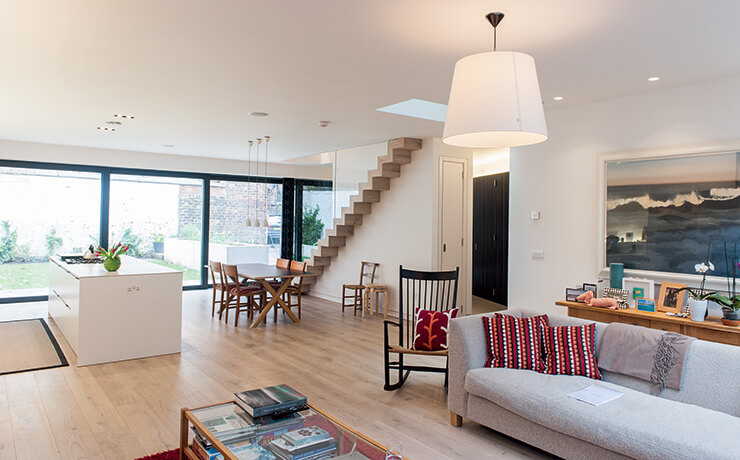
Above and top: Natasha Marshall’s conversion of an former furniture restorer’s workshop in Glasgow city centre has given them a light-filled contemporary home. The enclosed site required some clever design to get light into the house, including walk-on floor glazing and a clerestory window
Alongside these general policies, PD rights have been extended to include change of use of offices, shops and storage/distribution facilities to residential. In addition, the space above shops can be converted to create a maximum of two flats. A new right to convert buildings in light industrial use is set to arrive in autumn 2017 as well.
Councils’ Local Plans address things like the loss of employment or retail uses, so they might restrict changes of use in prescribed areas. In historic town centres, you may find designations such as conservation areas or listed status – and policy usually aims to preserve these so-called heritage assets.
Bearing that in mind, there’s no guarantee you’ll win consent for your project. It’s always best to investigate the council’s LP to try to gauge how a scheme you’re considering might be received. If you’re in any doubt, check with the local authority or seek advice from a planning professional. Find out, too, whether there’s a Neighbourhood Plan operating in your area and if it includes any relevant policies.
There is a number of promising routes to creating a new home from scratch in urban locations. One of the most well-trodden paths is the classic demolish and rebuild, which tends to be fairly uncontroversial if you are dealing with a property that has no special merit (ie there’s no heritage status or similar designation that might preclude redevelopment).
Classic candidates include rundown buildings, bungalows and small homes that don’t make best use of a sizeable plot. Councils rarely have specific policies relating to the replacement of existing homes in built-up areas, and in theory you should be able to increase the size in most cases – although some councils might insist on adding several units in preference to a single, larger property.
Disused brownfield land could be another strong option, but the larger sites tend to be snapped up by big developers – although a number of custom build and collective schemes have been successful in picking up sizeable plots to enable multiple individual homes.
On a smaller scale, keep an eye out for old car parks, garaging and similar opportunities. Check for gaps in built-up zones, too. These infill plots might be found at the end of terraces or in between houses. Gardens are another long-standing rich vein of plots; although in inner city areas you may need to negotiate with several landowners to carve out a reasonably-sized site.
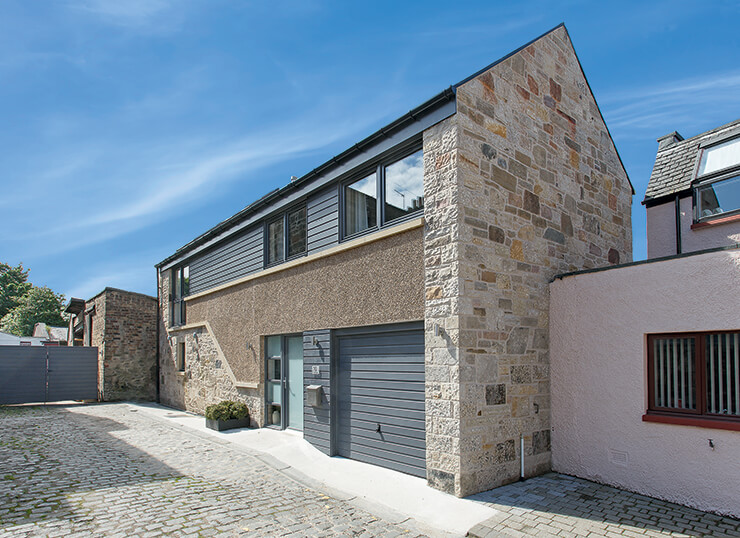 June Russell and Andrew Laing struggled to find the right plot, but eventually tracked down a former car park with planning consent to build in the heart of Edinburgh. The tight site required a number of clever solutions during the works, including renting an adjacent builder’s yard for access and opting for a site-cut timber frame |
Many urban projects involve the refurbishment and/or extension of existing buildings. Common schemes on tight sites include adding living space at the top – for example via a loft conversion – and extending underneath with a basement. These strategies can also be applied to new build housing, and may be particularly worthy of consideration if a plot faces restrictions on ridge height.
Changing the use of town centre buildings (which include redundant offices, workshops, warehouses, halls, churches and libraries) can offer plenty of scope for creating innovative and interesting homes. Note that where you’re converting and changing the use at the same time, you only need to make a single planning application, which wraps up both aspects of the project.
You can convert listed buildings, too, but you should be aware of the need to preserve the historic fabric of the property. Not every example will be suitable and you’ll need listed building consent as well as planning permission. Take advice from a designer with particular experience of historic structures if you’re contemplating such a project.
Permitted development rules are surprisingly complex and open to varying interpretation by different councils and officers, so if you want to complete a project under this regime, it’s important to be certain it fits within the limitations.
Rights to change use from office to residential don’t apply universally, and some councils will have opted particular business districts out of their provisions. A number of other locations and types of property are excluded, too, including conservation areas and listed buildings.
Changes to residential use from offices, shops and storage uses are subject to a prior notification regime, which is a bit like a mini planning application. This enables the council to check aspects of your project, such as highway safety, flooding and contamination risks – and to ask for more information if there are issues with any of these factors.
The rights to convert shops are also hedged by a somewhat open-ended proviso that councils can refuse a scheme because it’s undesirable in terms of its impact on retail provision.
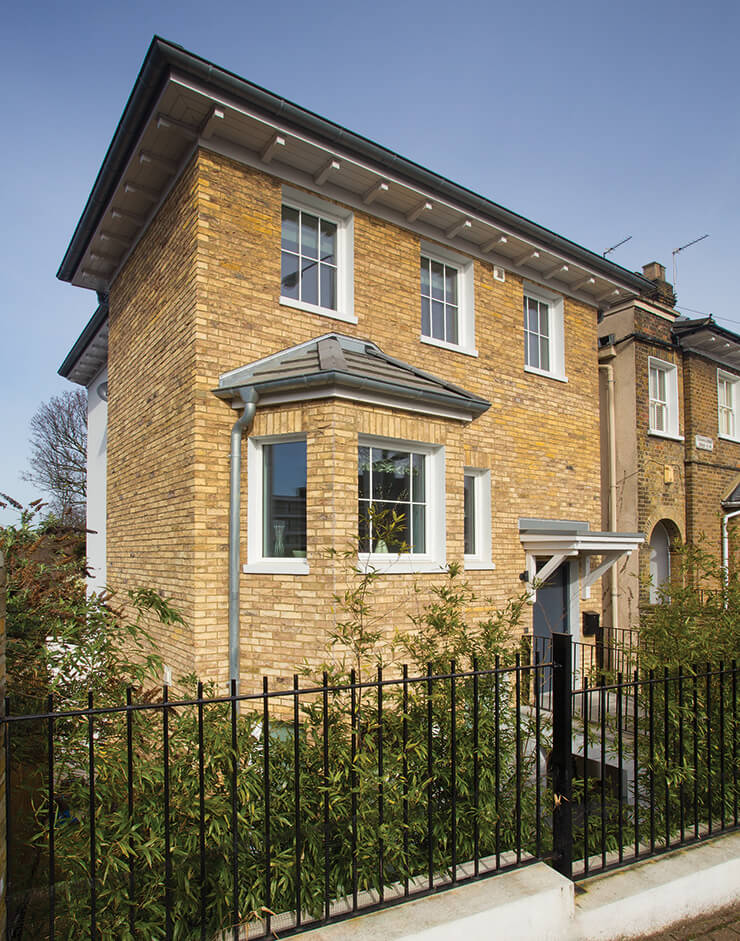 Set on a brownfield plot at the end of a Victorian street, adjacent to a railway rack, Matt and Jo Warnes’s project is an excellent example of infilling in a city suburb. To maximise the available footprint, the couple opted for timber frame with brick slip cladding |
In the case of office to residential conversions, and with flats above shops, it’s only internal works to facilitate the conversion that can be done without permission. External alterations that would change the appearance of the building will require formal planning consent.
The shop-to-residential rights are more generous, covering external works and even partial demolition. If your particular proposal doesn’t quite fit the PD rules, it will need planning permission.
The presence of a so-called ‘fall-back’ option of an alternative scheme that would be permitted development can be an important consideration in any application. This is forcing councils to grant permission in situations where historically they might have refused (on grounds of loss of business or retail space, for example).
With new builds, as well as more involved extensions or conversions where planning permission is required, standards tend to be applied somewhat more flexibly in town centres than elsewhere.
The council is likely to be amenable to lower levels of privacy, outlook and light, for instance – although you will still want to maximise brightness in your home. There’s also likely to be less or even no demand for amenity space and less need for car parking.
Urban planning policies generally aim to achieve the most efficient use of the land available. You may be hoping to create a large family home from a conversion, for example, but the council’s policies might favour a scheme of small flats.
Make sure when developing a suitable scheme that you inspect the council’s Local Plan maps carefully, which you can usually do online. It’s common in town centres for one policy to apply to one side of a road but not the other, for instance, or for adjoining buildings to be subject to quite different policies.
Be aware that planning guidelines are updated from time to time, so always check whether anything that currently supports your proposal is likely to remain in force for the duration of your application.
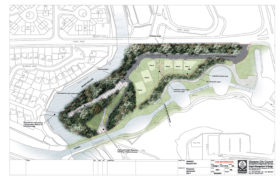
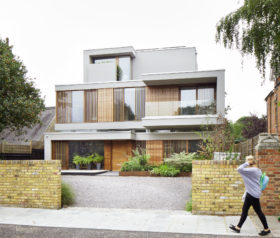
Comments are closed.